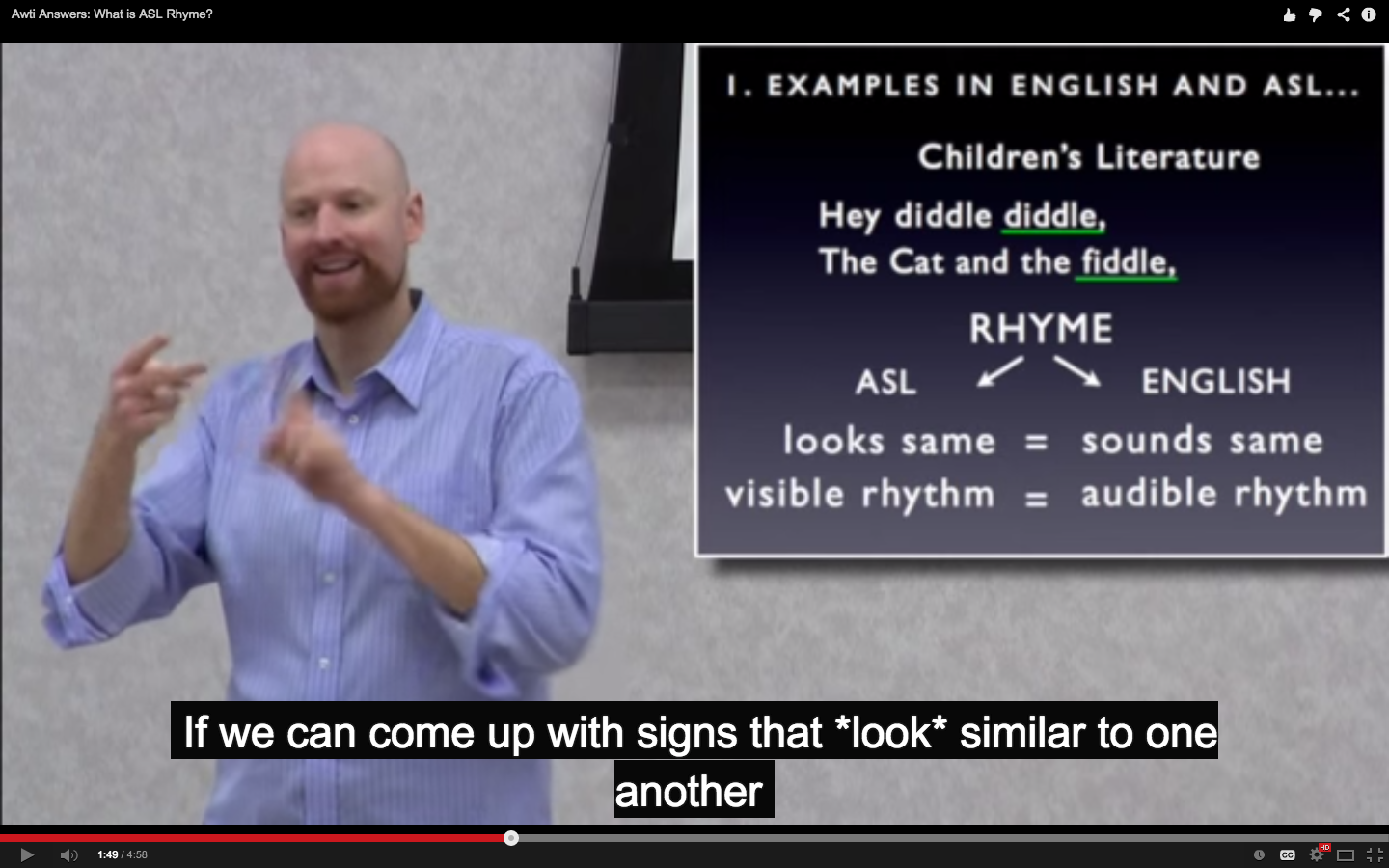What’s a childhood without nursery rhymes? And what’s a nursery rhyme without, well, rhyme? Rhyme and rhythm in language are important parts of storytelling, especially for children, but how would you go about making the last part of the word sound the same if your words don’t have sounds in them at all? In other words, can there be rhymes in ASL or other sign languages?
In the video below, Austin W. Andrews, an ASL storyteller also known as Awti, presents an engaging proposal for creating rhymes in ASL, using the example of “Hey Diddle Diddle.”
Awti points out that since rhyme is based on the repetition of portions of words, the portions of words that get repeated don’t necessarily have to be sounds. They could also be movement, handshape, location, palm orientation, or other components of signs. According to his website, Awti is hearing but was raised in a deaf family, so he’d be well-placed to draw these types of comparisons.
Another example of rhythm, if not rhyme, in ASL is the following video of ASL interpreters doing a rap battle on Jimmy Kimmel.
Unfortunately, the interpreters are more constrained in how they can repeat portions of signs like Awti does since their job is also to be faithful to Wiz Khalifa’s lyrics, and words that rhyme in one language don’t necessarily rhyme in another. With “Hey Diddle Diddle,” Awti gets around that translation problem by using a swinging arms gesture that looks similar to the sign for “fiddle.” Swinging arms may not mean much in ASL, but then again, neither does “diddle diddle” in English. And you can imagine that composing poetry directly in ASL would let you figure out ways to repeat elements of the signs with even more creativity.
One other type of repetition, already common to both sign and spoken languages, is in making sentences difficult for fun—the genre known as tongue twisters and finger fumblers. Here’s an example of the ASL finger fumbler “good blood, bad blood,” which also doubles as a tongue twister in English. Try signing that five times fast!
